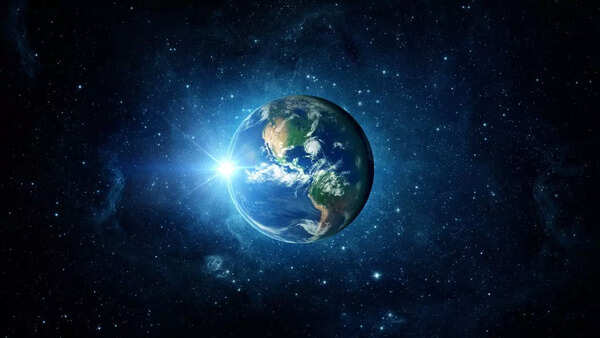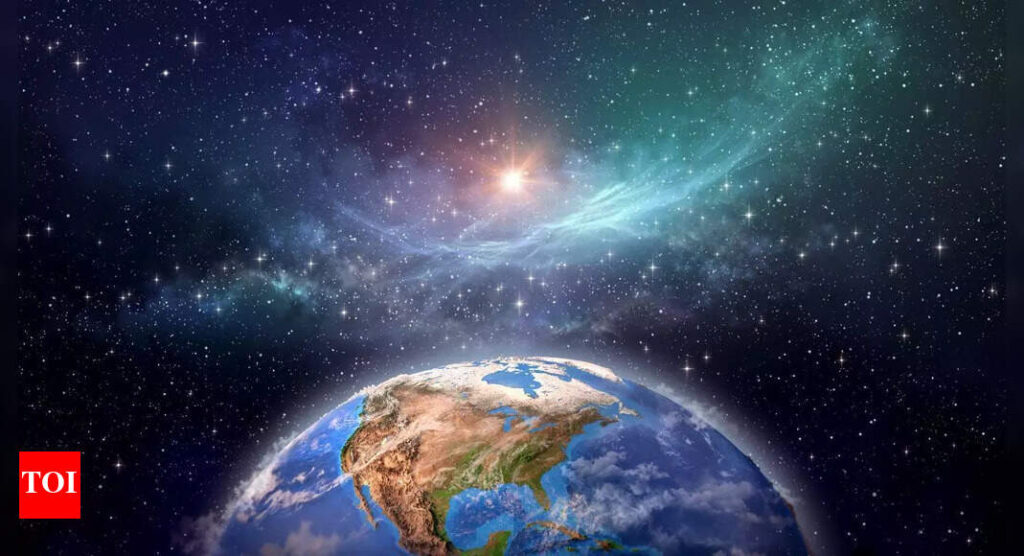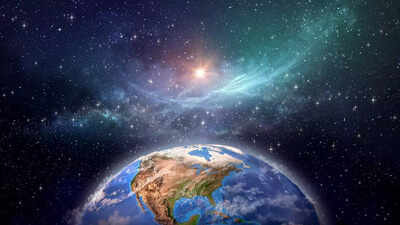Most of us go through life assuming Earth’s place in the universe is secure. We picture our planet as a blue marble, peacefully orbiting the Sun in a cosmic dance that’s guaranteed to go on for billions of years. But a new study is quietly challenging that idea, and it’s doing so with science, not speculation. According to researchers writing in the journal Icarus, a rare but possible event could one day push Earth out of the solar system entirely. The culprit? A wandering star.No, this isn’t science fiction. Scientists used thousands of orbital simulations to explore what would happen if a nearby star passed a little too close to our solar system. What they found was both fascinating and a little unnerving: even a modest gravitational nudge could create instability, ultimately disrupting planetary orbits, including Earth’s. It’s not likely to happen tomorrow, or even in a million years. But the possibility is real, and the consequences are enormous.
How a star could upend the solar system
In space terms, our solar system is like a calm pond, but even the smallest pebble can cause ripples. According to the study in Icarus, a passing star within 10,000 astronomical units (AU) could be that pebble. That’s about 0.16 light-years away far enough to sound safe, but close enough to disturb the Oort Cloud, a massive halo of icy debris that surrounds our solar system.If a star’s gravitational pull nudges this distant region, the disturbance could slowly travel inward. Over time, that gravitational imbalance could destabilise the orbit of Mercury, which has the most eccentric orbit of the inner planets. And that’s where things get serious.

Earth
Why Mercury matters more than you’d think
The simulations showed that Mercury is like a domino. If it starts to drift due to a star’s influence, it could eventually set off a chain reaction that pulls Venus, Earth, or Mars into unstable paths. In the most extreme scenarios, Earth could either fall into the Sun or get flung out into deep space, becoming a “rogue planet.”The good news? According to the study, Earth’s odds of getting ejected or crashing into the Sun are only around 0.2% to 0.3% over the next five billion years. Small, yes, but not zero. Mercury, on the other hand, has up to an 80% chance of destabilisation in those same simulations.
Is there any real-world precedent?
Actually, yes. Astronomers already know of real stars on paths that could bring them dangerously close to our solar system. One of them, Gliese 710, is expected to pass through the outer edge of the Oort Cloud in about 1.3 million years. While it won’t come close enough to harm Earth directly, its approach serves as a reminder that close stellar encounters are not rare in cosmic terms.This isn’t just theoretical work. Observatories like Gaia, run by the European Space Agency, are already tracking thousands of stars and mapping their trajectories to predict future flybys. In fact, Gaia data was instrumental in identifying Gliese 710’s path.
The chain reaction: From calm to chaos
Here’s how such a scenario could play out:
- A nearby star drifts into the outskirts of our solar system.
- Its gravity disturbs the Oort Cloud and alters the orbits of far-out objects.
- Over millions of years, that gravitational tug moves inward, affecting Mercury.
- Mercury’s orbit shifts enough to destabilise nearby planets.
- Earth, caught in the gravitational mess, could spiral into the Sun—or be cast out into the cold void.
It’s the cosmic version of a slow-motion car crash, with one unexpected swerve turning into a full-on pileup.
So… should we be worried?
Not immediately. Earth’s orbit is still remarkably stable. In fact, NASA and other agencies confirm that our planet has maintained a steady path around the Sun for billions of years. The chance of a catastrophic event happening in our lifetimes or in the next few million years is extremely low.But the study is a humbling reminder that we’re part of a much larger galactic ecosystem. We don’t live in a perfectly sealed solar system. We’re just one part of a dynamic, shifting universe, where stars drift and gravity acts like a quiet puppeteer.
What it teaches us about Earth’s fragile place in space
This kind of research is less about fear and more about perspective. It’s not that Earth is doomed; it’s that stability is borrowed, not guaranteed. The idea that a distant, barely visible star could, over millions of years, change everything, adds another layer to our understanding of cosmic vulnerability.It also helps scientists improve future models. By understanding how small nudges affect planetary motion, astronomers can better predict everything from asteroid trajectories to long-term climate models influenced by orbital patterns.


